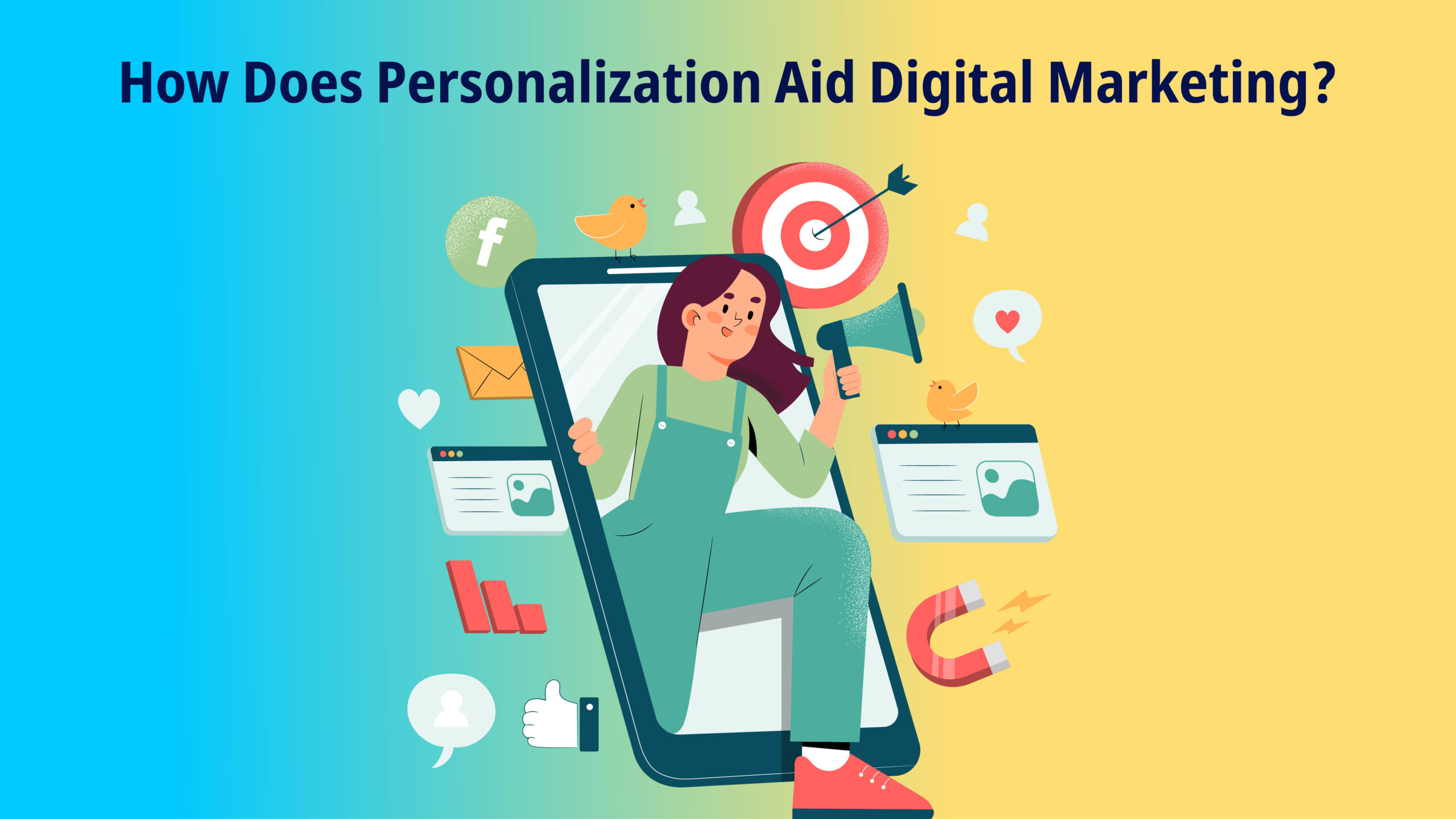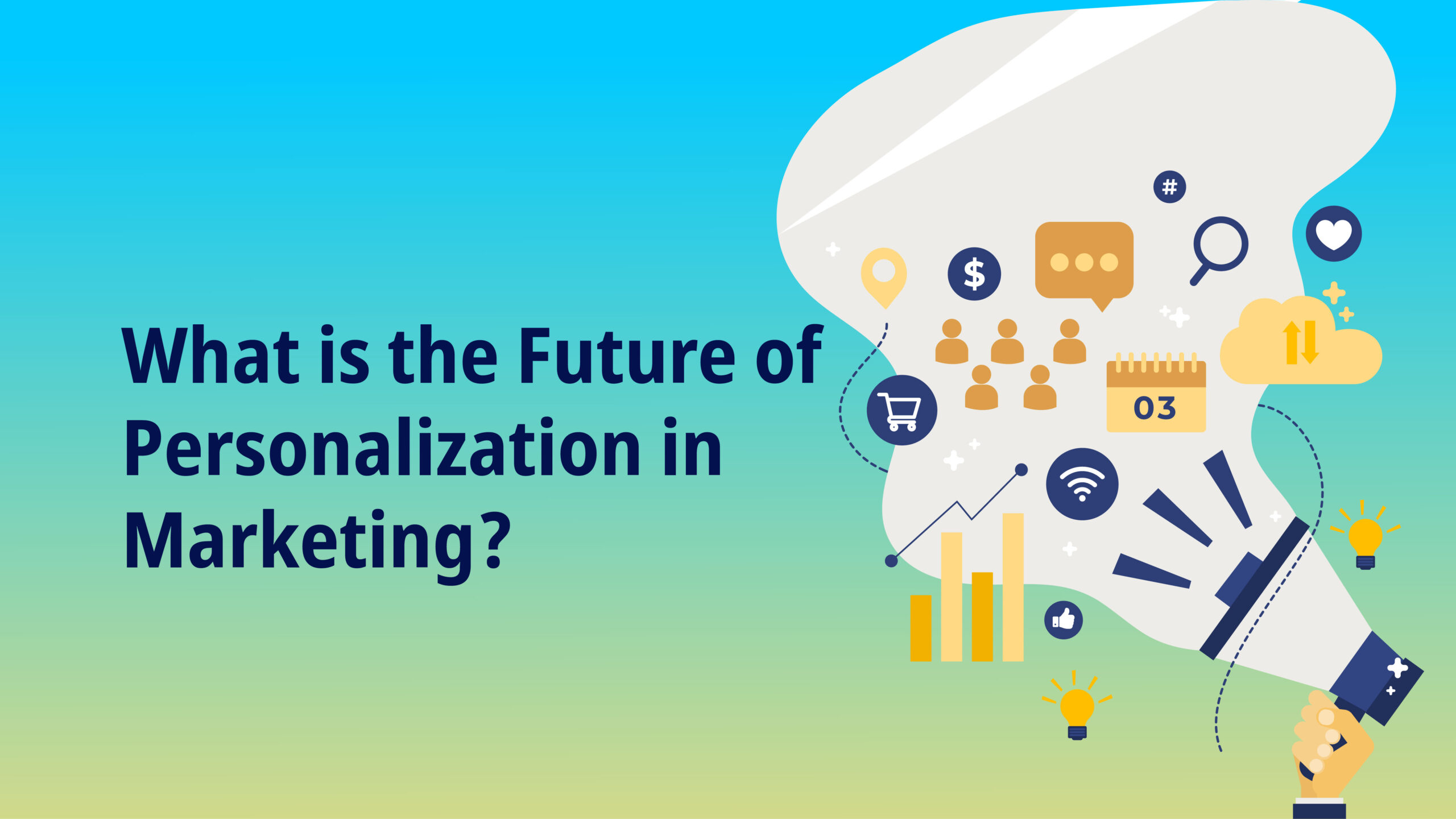Personalization in marketing is crucial for fostering valuable customer interactions, and it’s not just a passing trend—it’s a lasting strategy. A study by Accenture reveals that 91% of consumers are inclined to shop with brands that remember them and offer relevant promotions. As customers increasingly demand more than generic messaging, it’s essential to delve into the details of marketing personalization, exploring upcoming trends in the process.
In this blog post, we will delve into five ways personalization is driving digital marketing trends in 2024. While some of them may seem obvious, others might pleasantly surprise you.
What Does Personalization Mean in Digital Marketing?
In the era of e-commerce, engaging with digital customers is no longer an option but a necessity. Simply having a website with product descriptions isn’t sufficient. To succeed, you must connect with individuals right from the start of their buyer’s journey and establish yourself as an authority in the products they seek.
Modern consumers typically kick off the buying process by gathering information. When you engage with them during this initial stage, you provide valuable insights that showcase your expertise. As you address their inquiries, you foster a meaningful connection. Each of these connections contributes to your bottom line by increasing the likelihood of a sale.
Personalization, which involves using user information to enhance your messaging, empowers you to connect with potential customers through tailored content, customized messages, and personalized offerings that revolve around the customer’s needs and preferences.
How Does Personalization Aid Digital Marketing?

Here are some statistics that highlight the positive impact of personalization on the digital market.
- According to Google, a substantial 90% of top marketers acknowledge that personalization plays a crucial role in driving business profitability.
- 69% of consumers favor personalization, especially when it’s based on data they’ve willingly shared with a business.
- Gartner reports that 63% of digital marketing executives find it challenging to deliver personalized experiences to customers.
- Epsilon’s findings indicate that 80% of respondents prefer doing business with organizations that offer tailored experiences, and 90% value personalization.
Best 5 Ways Personalization is Transforming Digital Marketing
Now that we have a fair idea about personalization and why it’s a crucial factor in driving digital marketing trends, let’s see how exactly they achieve this shift.
Machine Learning in the Mix
Machine learning is more popular than ever, and at a time when companies are being faced with analyzing millions of data points for experience delivery, automated solutions will be critical to success.
Organizations require computers to discover, gather, and interpret user and product data to provide users with the greatest possible variants, recommendations, and overall experience. We expect this trend to continue as people get more comfortable with handing over some control to machines.
Connecting the Real and Virtual
One of the most sought-after realities in the tech sector is the merging of analog and online encounters. Organizations want to connect users across all potential touchpoints, including smartphones and websites, as well as kiosks, IoT devices, and other gadgets.
The ability to integrate data points across different channels will help marketers create genuinely amazing, seamless experiences, which will have a significant influence on both the user experience and the bottom line. Businesses will be able to redefine customer-brand relationships as we know them by putting experience optimization at the center of these initiatives.
Personalized Data Strategy
To be successful with personalizing, one needs to have spots where one can collect gateway demographic data points (such as emails and IPs). Collecting these fields opens the doors to more data — and better data. If one doesn’t collect these two things already, short and simple, add them now.
And if one already does collect emails and IPs, kudos to them! With these collected items, one can start unlocking the potential keys to a plethora of other information. Companies can hit an API call with an email or IP, and pull data into your personalization platform to create audience buckets and start deploying personalization experiments.
Dismantling Data Silos to Omnichannel Delivery
To be successful with personalization, one must have locations where gateway demographic data points can be collected (such as emails and IPs). If one hasn’t already gathered these two items, now is the time to do so.
And cheers to those who already collect emails and IP addresses! With these assets in hand, one can begin unlocking the potential keys to a wealth of other data. Companies can use an email or IP to make an API request that pulls data into your personalization platform, allowing them to establish audience buckets and launch customization tests.
Data Privacy is a Priority
Organizations must go above and above to demonstrate that they value data privacy by being honest about how data will be used, restricting personal data processing to what is essential, safeguarding data against theft, and offering consumers the right to be forgotten.
Data governance and privacy policies must become an integral component of a marketing organization’s standard operating model, not an afterthought. To make this possible, ongoing training on legitimate first-party data collecting methods and data uses, including data sharing with partner platforms, is essential. Privacy concerns are at the heart of customer-brand trust. Businesses must get it correctly.
What is the Future of Personalization in Marketing?
 The future of personalization in marketing is on the cusp of transformative growth, driven by technological advancements, data analytics, and enhanced customer expectations. Brands must now prioritize delivering personalized experiences to meet the demands of today’s consumers. Customer Data Platforms (CDPs) are emerging as the go-to solution for managing and harnessing the ever-increasing volume of customer data. Artificial Intelligence (AI) plays a crucial role in enabling personalization, but finding the right balance is key. The benefits of personalization are significant, including increased revenue and improved customer loyalty. However, marketers face challenges in fully realizing the potential of personalization. Trends such as data privacy concerns, the shift towards cookieless personalization, and the use of first-party data are shaping the future of personalization in marketing. Brands that can navigate these trends successfully will cultivate deeper customer engagement, foster loyalty, and drive revenue growth.
The future of personalization in marketing is on the cusp of transformative growth, driven by technological advancements, data analytics, and enhanced customer expectations. Brands must now prioritize delivering personalized experiences to meet the demands of today’s consumers. Customer Data Platforms (CDPs) are emerging as the go-to solution for managing and harnessing the ever-increasing volume of customer data. Artificial Intelligence (AI) plays a crucial role in enabling personalization, but finding the right balance is key. The benefits of personalization are significant, including increased revenue and improved customer loyalty. However, marketers face challenges in fully realizing the potential of personalization. Trends such as data privacy concerns, the shift towards cookieless personalization, and the use of first-party data are shaping the future of personalization in marketing. Brands that can navigate these trends successfully will cultivate deeper customer engagement, foster loyalty, and drive revenue growth.
Final Takeaway
The move toward personalization has been ongoing, and it’s now a focal point in reshaping digital marketing trends. With increasing consumer expectations for customized experiences and the abundance of digital data, businesses are actively exploring innovative solutions. The goal is to meet these demands without compromising quality or functionality.


Comments are closed.